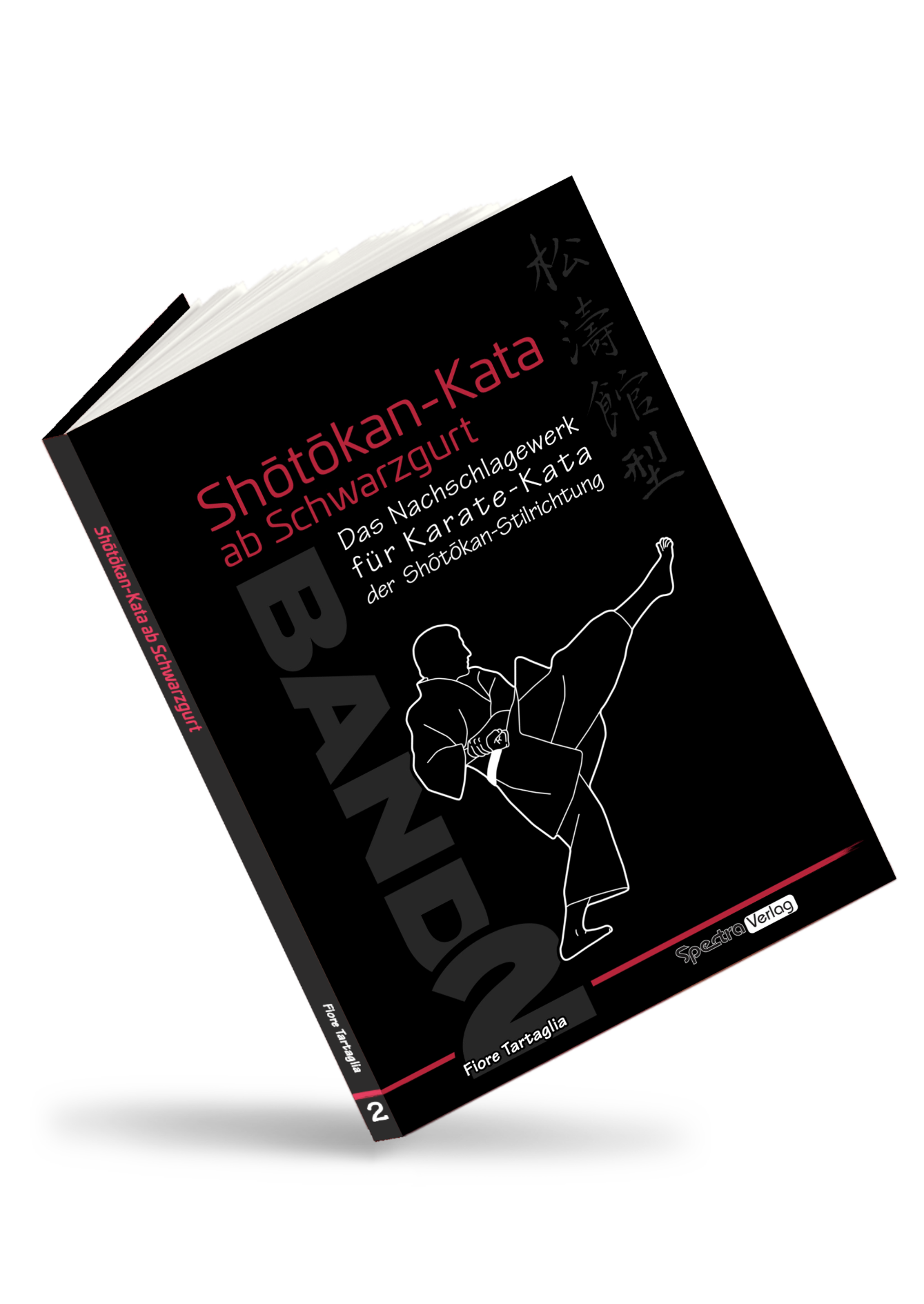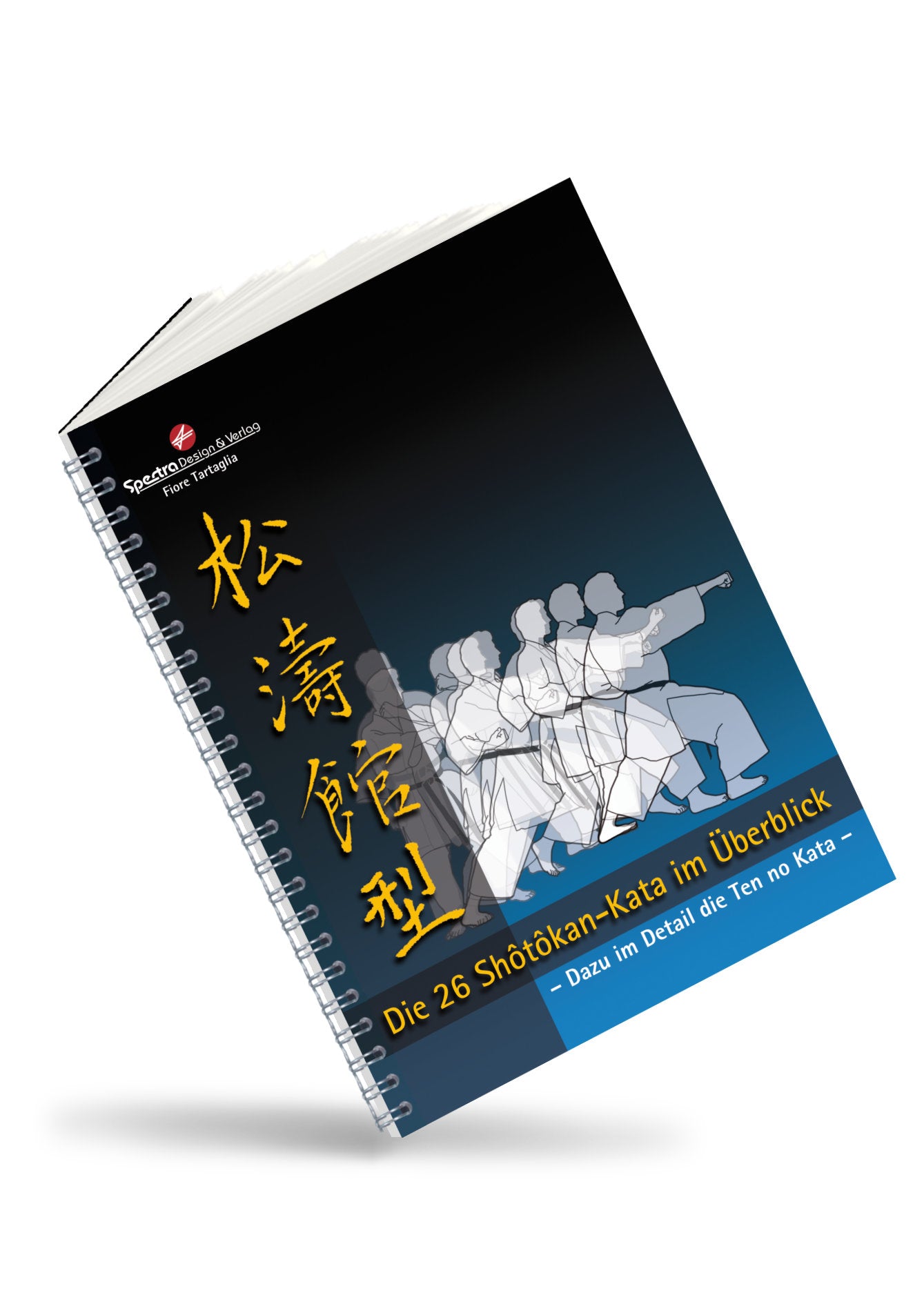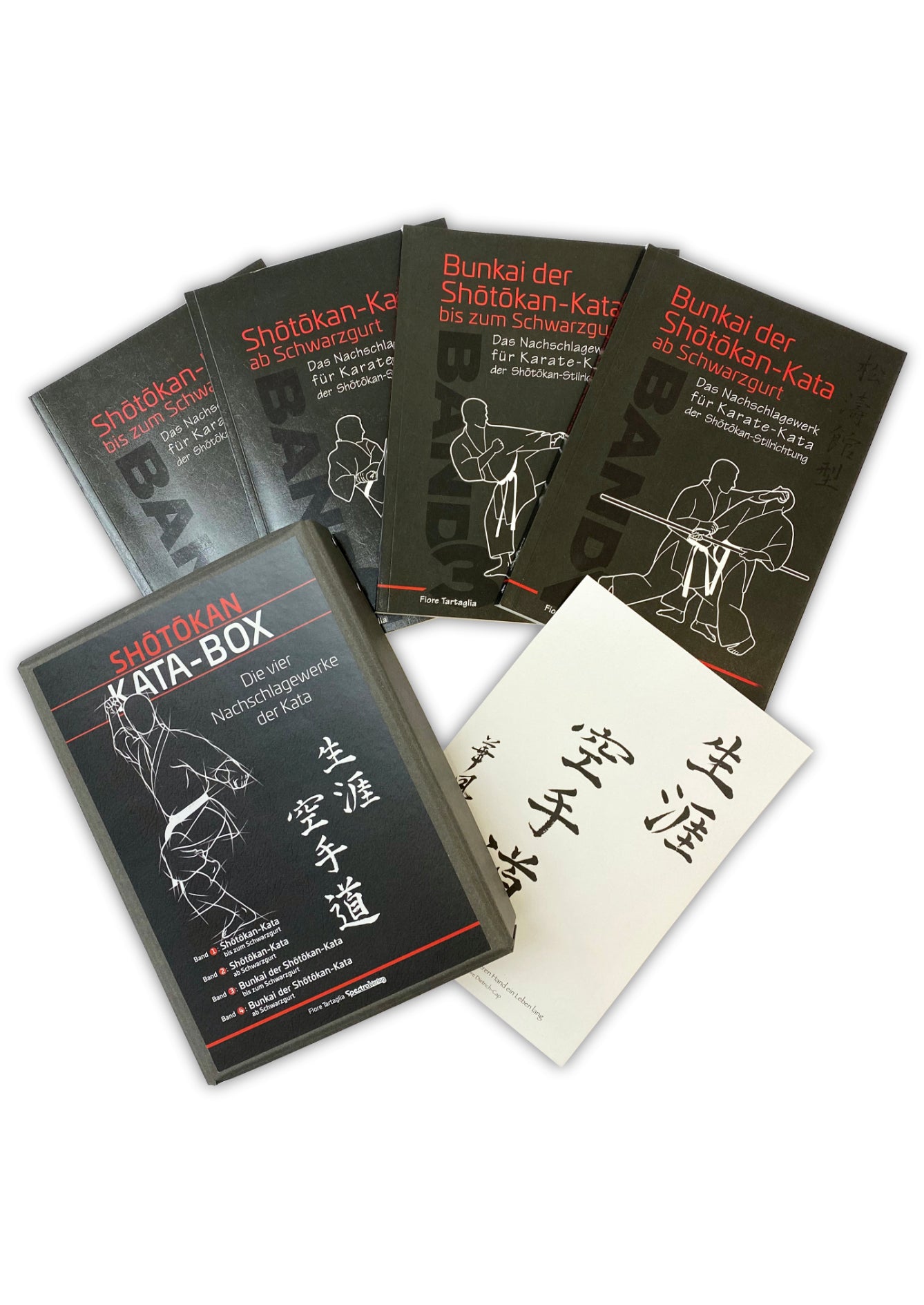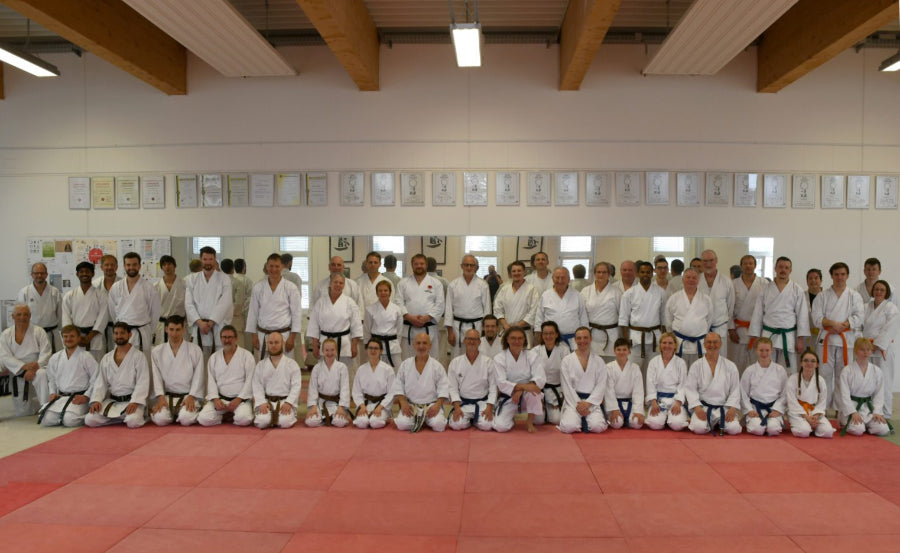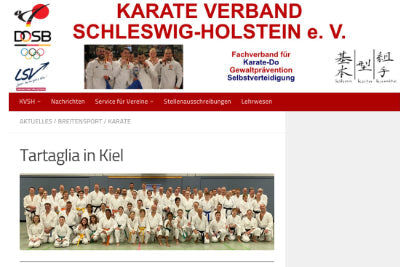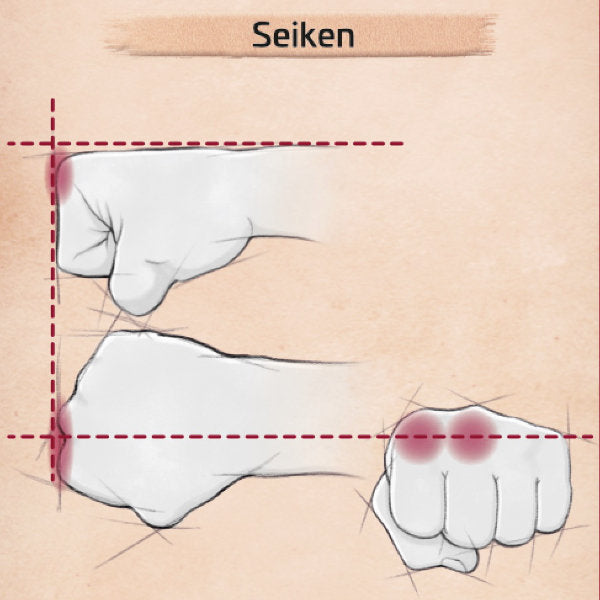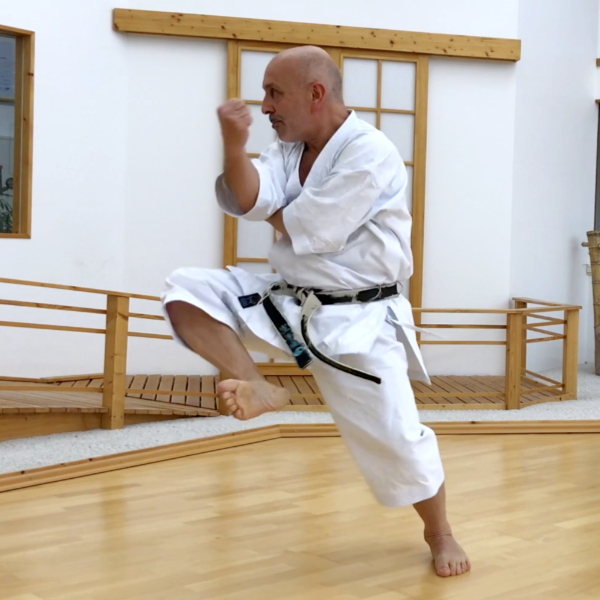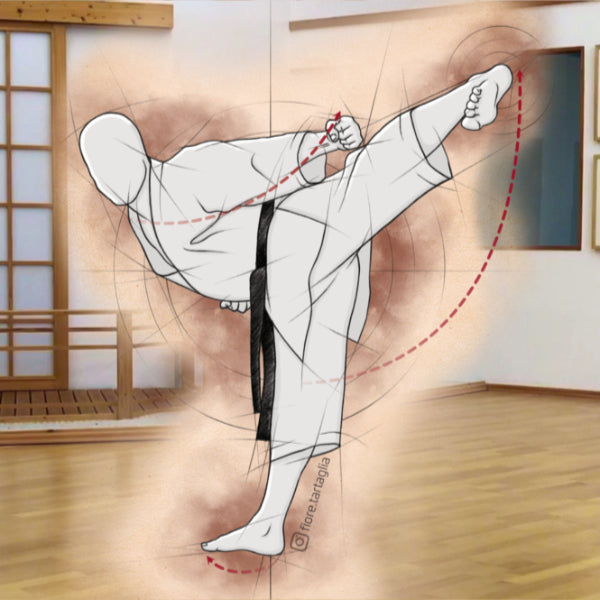GOJŪ SHI HO DAI – 54 STEPS – BIG
The two Gojū shi ho are the highest kata of the Shuri te. Gojū shi ho dai is also practiced in the Shōrin-ryū and Shitō-ryū styles.
The often repeated sequences of the three Ippon nukite, which are performed in quick succession, are reminiscent of a woodpecker tapping its beak against a tree.
For this reason, Funakoshi’s kata was called “Hotaku,” which means woodpecker tapping.
The current name (Gojū shi ho dai = 54 steps, large) indicates the number of steps in the kata.
The first circular movement is an attack from above. The left fist can be interpreted either as a downward defense against a punch or simply as support or cover.
The three Ippon-nukite techniques are performed as follows: the first nukite is performed in a straight line from above, the other two are performed in small semicircular movements. The left hand is moved forward and downward over the right. The right hand is simultaneously drawn back so that it rests against the left forearm.
The same movement is performed in reverse. Although these are small and very fast movements, it is important to remember that the three Ippon nukite should be executed according to the Sanbon principle.
The two defensive techniques, Tate shutō uke, at the beginning of the kata are shown here in Zenkutsu dachi. An equally common variation involves performing these two techniques in the Fudō dachi stance.
It's important to note that Gojū shi ho dai features a very complex enbusen. One should practice very precisely and study the various shuri-ashi movements intensively in order to ultimately end up at the same point where one began the kata.
Although this kata can be described as static, it has a fluid character due to the many Neko ashi dachi and the subsequent slow turns.
The 270° turns before the two Sokumen gedan haitō uke are very demanding. They are executed with lightning speed and precise kime to emphasize the Gojū shi ho dai (steadiness/body control). If the body's center is not maintained, a quick execution of the turns is impossible. Furthermore, arriving in a clean Kiba dachi promotes practice and precision.
In addition, this kata is characterized by both the strengthening of the leg muscles and dynamic short technique sequences.
Furthermore, in this kata, as well as in its “sister” Gojū shi ho shō, the exact gaze turns must be observed, as these additionally shape the character of the two Gojū-shi-ho kata, especially in the first third.
Duration: approximately 100 seconds

